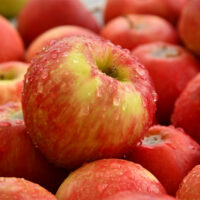Overactive bladder – Causes, symptoms, and management

An overactive bladder (OAB) is when one feels a sudden, uncontrollable urge to urinate. Individuals with this condition may feel the need to use the washroom multiple times during the day and night, which can hamper their daily functioning. For this reason, they may stay away from social situations to avoid discomfort and embarrassment. However, detecting the condition early on can help control its symptoms effectively. Doctors may suggest some treatment options in combination with lifestyle changes.
Causes and possible triggers
Here are a few causes and possible triggers of OAB:
1. Neurological disorders
Many people with underlying neurological problems may find it difficult to control urination, mainly because of a spinal cord, brain, or nerve issue. So, those with neurological disorders like Parkinson’s disease and multiple sclerosis may grapple with nerve damage, triggering or worsening OAB.
2. Diabetes
High blood sugar levels may cause damage to the nerves in the urinary tract, causing urinary tract problems. Consequently, those with diabetes are particularly vulnerable to OAB.
3. Bladder stones
Bladder stones tend to affect the bladder’s functioning, so bladder stones can increase one’s risk of developing OAB.
4. Certain types of treatments
Sometimes, an ongoing treatment course may trigger OAB as a possible side effect.
Symptoms of an overactive bladder
Here are a few symptoms of an overactive bladder:
1. Urgency incontinence
Urgency incontinence is when one needs to pass urine urgently and finds it difficult to control the urge. In many cases, it can cause one to pass urine involuntarily.
2. Bladder spasms
Sometimes, one’s urge to pass urine may be accompanied by bladder spasms or cramps and pain in the lower abdomen.
3. Disturbed sleep
Since patients with OAB often need to pass urine frequently at night, their sleep may be severely disturbed.
Treatment options
Here are a few treatment options that can help those with OAB manage their symptoms:
1. Kegel exercises
Doctors may suggest kegel exercises to strengthen one’s pelvic floor muscles and urinary sphincter. These exercises help gain control over the bladder.
2. Biofeedback
Here, electric signals are fastened to the patient; these receive information on the processes inside the body. The sensors then help one make certain conscious changes, such as strengthening one’s pelvic muscles, to control urination.
3. Bladder training
With bladder training, patients delay their urge to pass urine, control their bladder, and avoid going to the washroom for a certain duration. One can start with half-hour sessions and gradually increase them.





